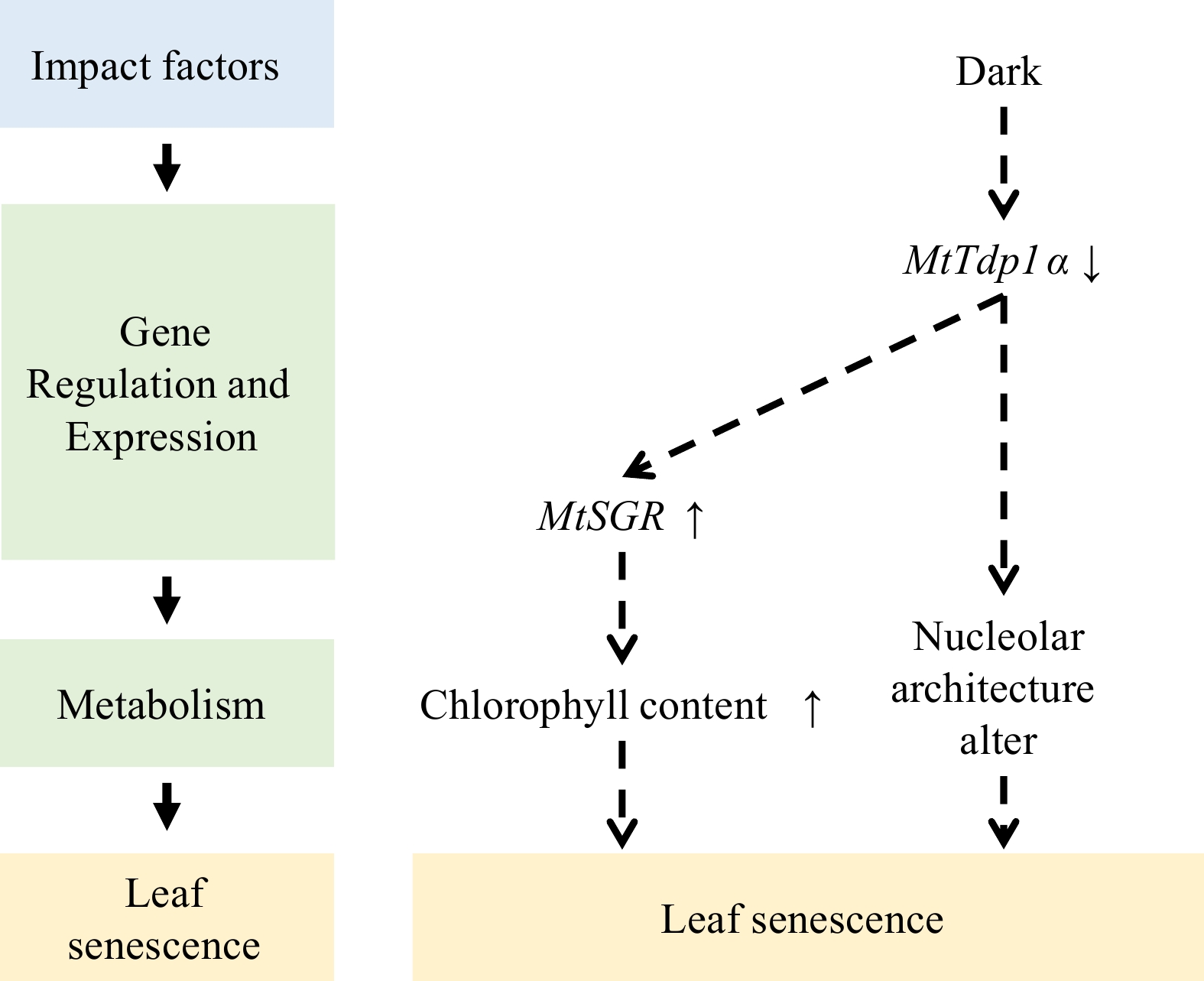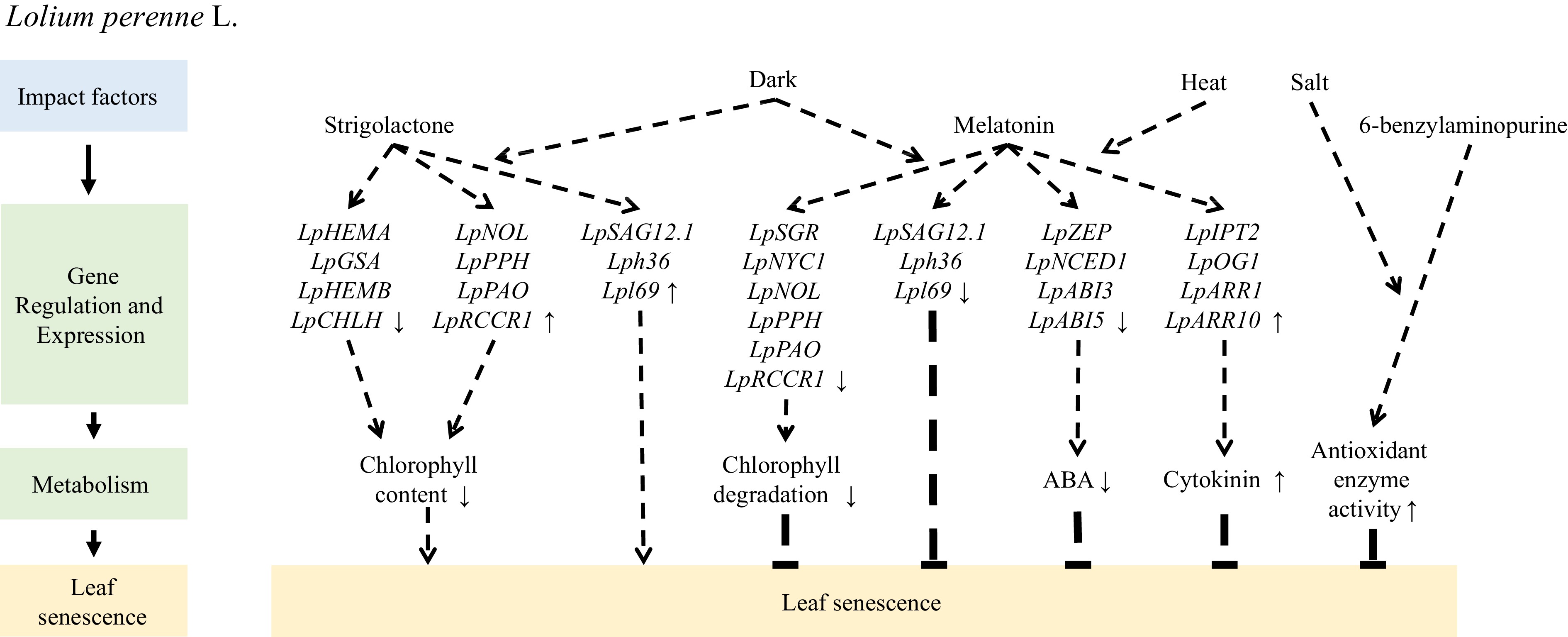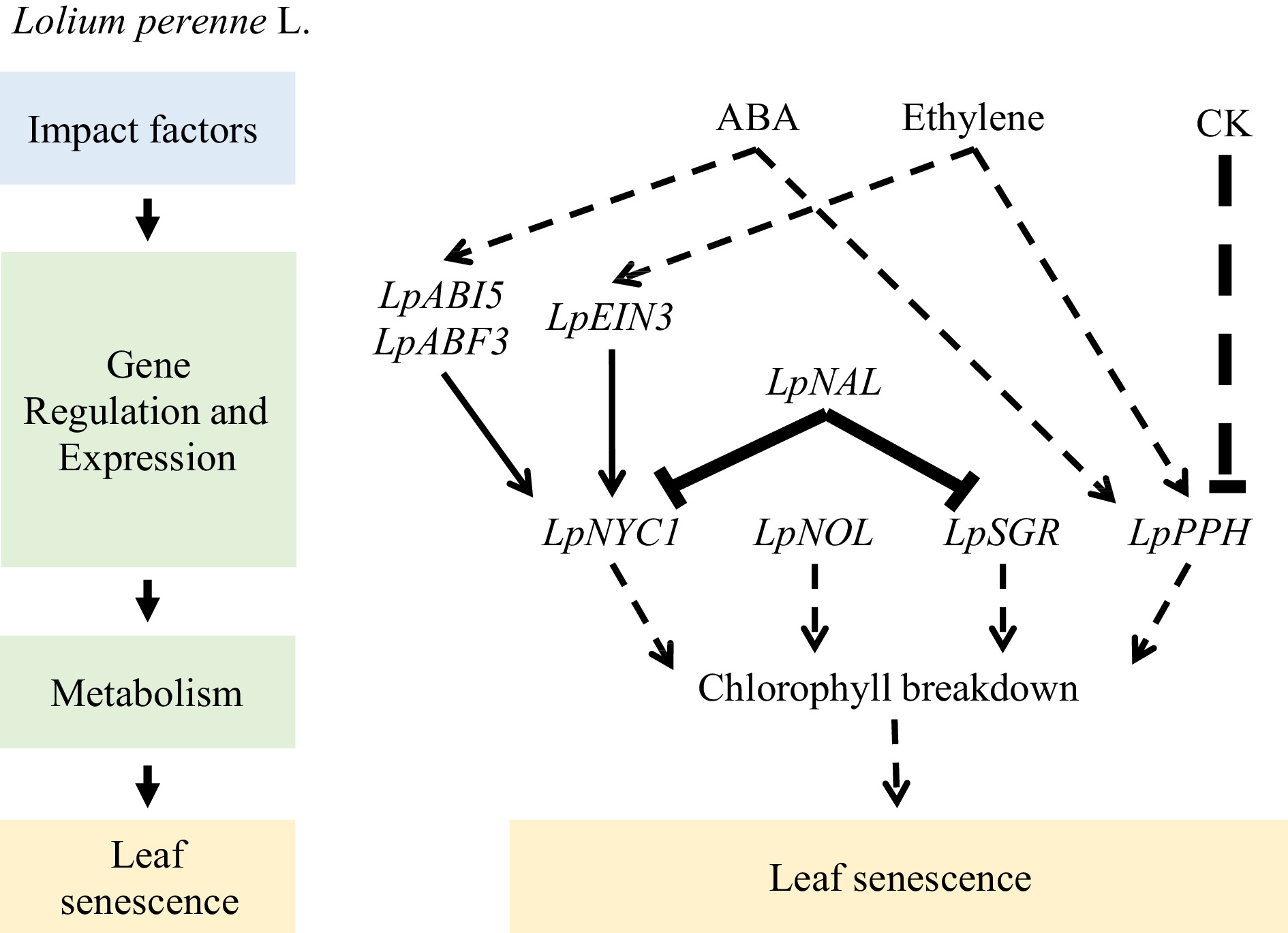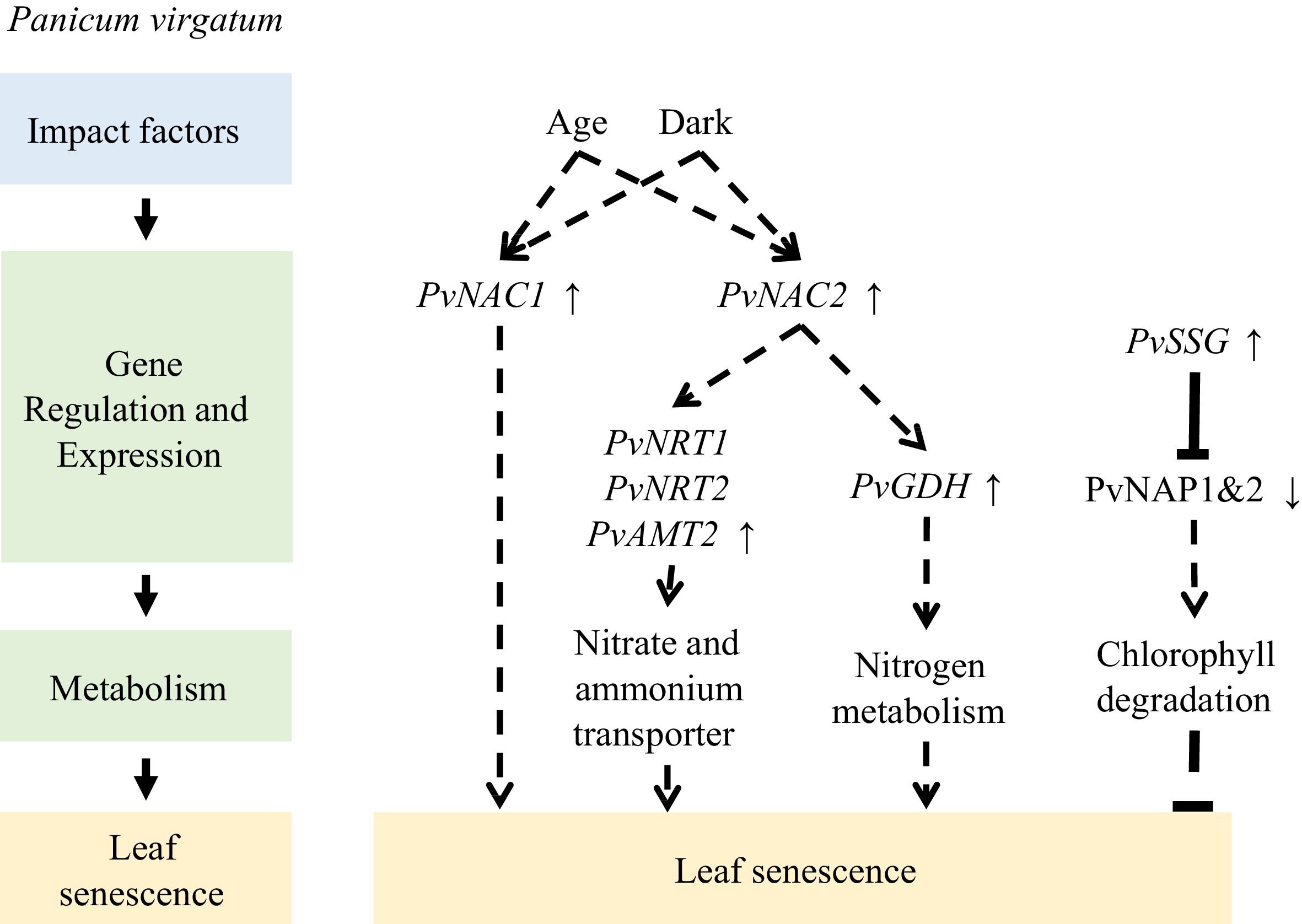-

Figure 1.
Regulation mechanism of leaf senescence in Medicago truncatula L.
-

Figure 2.
Regulation mechanism of leaf senescence in Medicago sativa L.
-

Figure 3.
Mechanism of exogenous hormone application regulating leaf senescence of Lolium perenne L.
-

Figure 4.
Regulation mechanism of leaf senescence in Lolium perenne L.
-

Figure 5.
Regulation mechanism of leaf senescence in Panicum virgatum.
-
Reagents Treatment Effects Ref. Aminoethoxyvinylglycine Heat Regulating chlorophyll metabolic activities [88, 111] Protease inhibitors in the cysteine, serine, or aspartic classes Suppressing proteolysis [112] Glutamate Suppressing chlorophyll degradation.
Activating amino acid metabolism involved in energy production, antioxidant defense, and nitrogen balance[113] β-sitosterol Alleviating the membrane lipid peroxidation and the enzymatic antioxidant system [114] Chitosan Up-regulating chlorophyll biosynthesis related genes.
Down-regulating chlorophyll degradation and senescence related genes
Increasing the activity of antioxidant enzymes[115] Spermine Maintaining higher chlorophyll content, net photosynthetic rate, photochemical efficiency, and performance index on absorption basis.
Promoting osmotic adjustment ability and antioxidant enzyme activities to enhance the scavenging capacity of reactive oxygen species.
Upregulating transcriptions of heat shock protein genes helping to maintain normal synthesis and functions of proteins[116] Biostimulants (TurfVigor and CPR) Promoting both shoot and root growth [117] Trinexapac-ethyl Improving the chlorophyll content and photosynthetic rate [117] γ-aminobutyric acid, proline, and ammonium nitrate Enhancing chlorophyll content and photochemical efficiency.
Suppressing chlorophyll-degrading enzyme activities under heat stress[118] Nitrogen Enhancing protein abundance in photosynthesis and amino acid metabolism and stress defense systems (heat shock protection and antioxidants) [89] Zeatin riboside Reducing heat-induced membrane lipid peroxidation
Reducing protease activity.
Maintaining higher leaf chlorophyll content, Fv/Fm, soluble protein content and antioxidant enzyme activity[84,87−89] γ-Aminobutyric acid Drought Promoting energy production and conversion, antioxidant defense, and DHN3 accumulation [119] Melatonin Increasing photochemical efficiency, chlorophyll content and relative water content.
Suppressing leaf electrolyte leakage, lipid peroxidation and hydrogen peroxide production.
Up-regulating the cytokinin-signaling and synthesis genes.
Down-regulating the chlorophyll-degradation genes and enzyme activities[120] Table 1.
Mechanism of exogenous application of various reagents to inhibit leaf senescence of creeping glumes.
-
Gene Species Effect Ref. Medicago truncatula Promote [54] Medicago sativa Promote [54] SGR Lolium perenne Promote (except heat stress) [71] Agrostis stolonifera Promote [102] Zoysia japonica Promote [109] IPT Medicago sativa Delay [58] Agrostis stolonifera Delay [90,91] Tdp1α Medicago truncatula Delay [56] TMT Medicago sativa Delay [59] miR156 Medicago sativa Delay [60] SPL9 Medicago sativa Promote [61] SAG113 Medicago sativa Promote [62] NYC1 Lolium perenne Promote [72] Zoysia japonica Promote [110] NOL Lolium perenne Promote [73,74,75] Zoysia japonica Promote [107,108] PPH Lolium perenne Promote [76] Zoysia japonica Promote [106] NAL Lolium perenne Delay [73] NAC1 Panicum virgatum Promote [81] NAC2 Panicum virgatum Promote [81] SSG Panicum virgatum Delay [83] Table 2.
List of the gene involved in leaf senescence in grass.
Figures
(5)
Tables
(2)